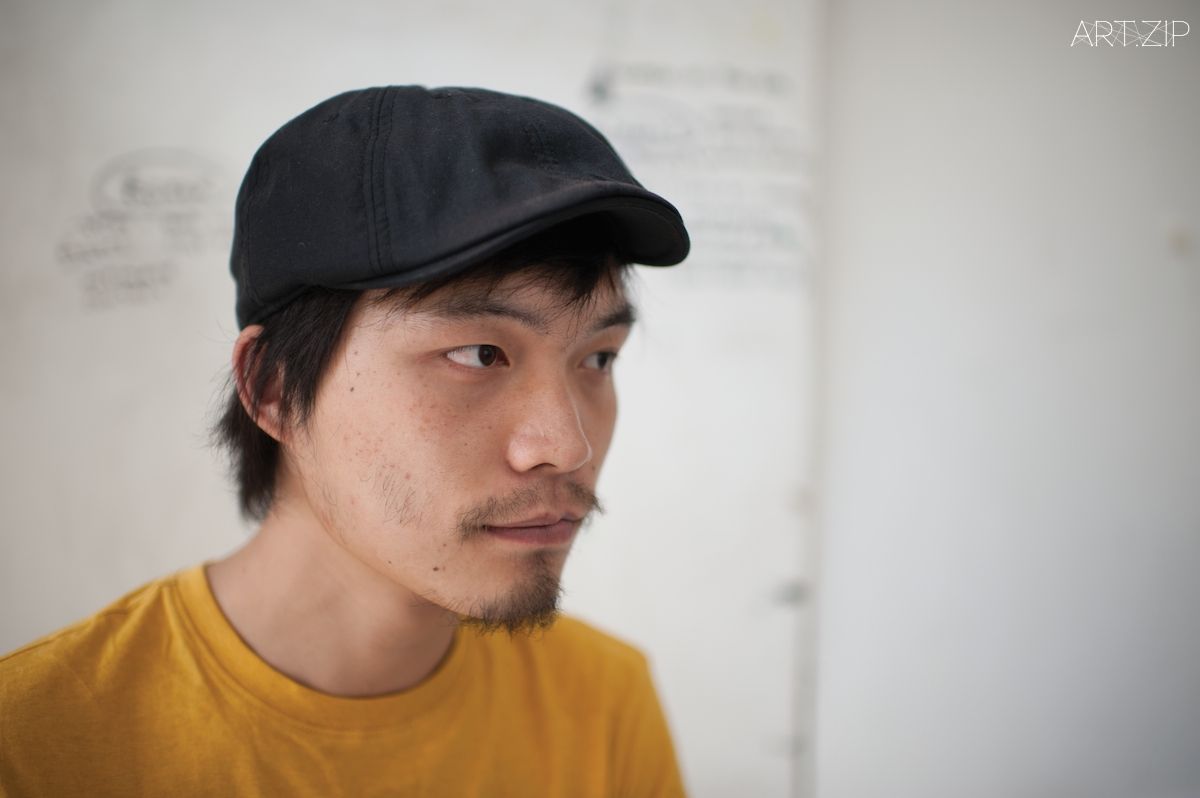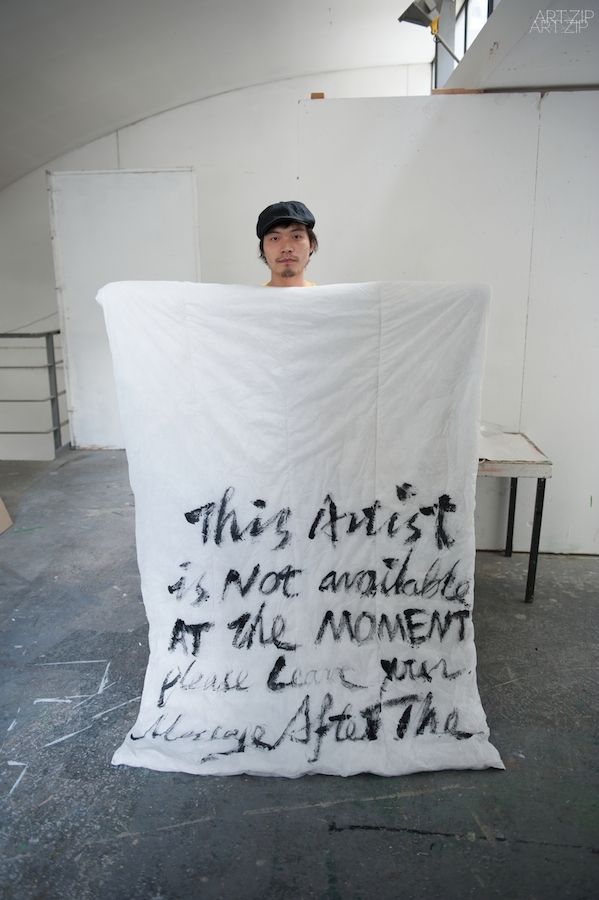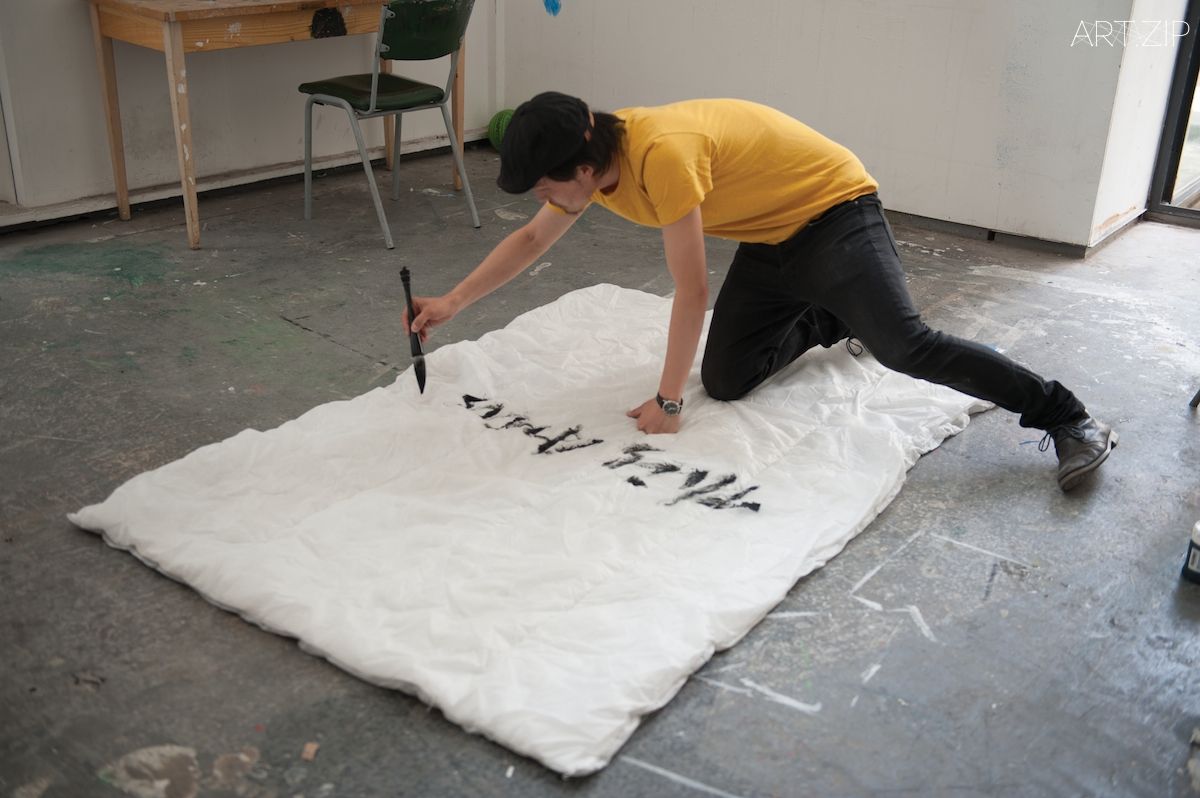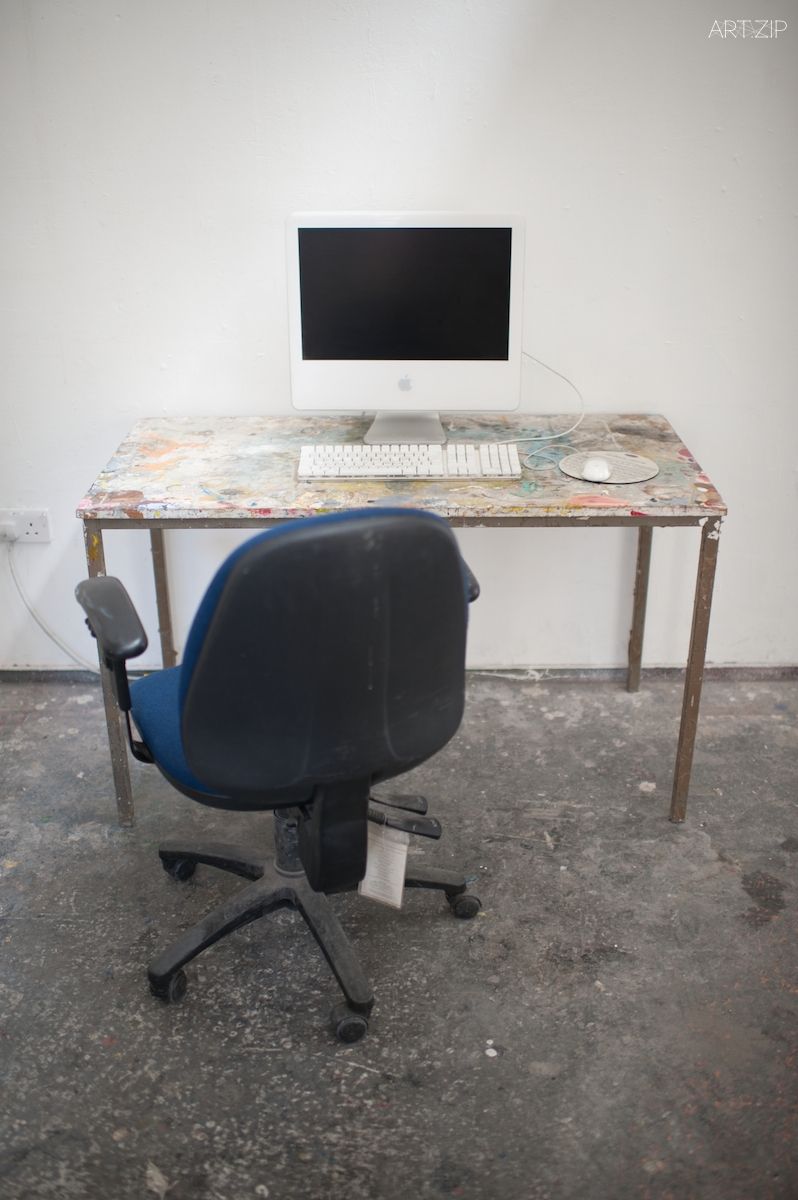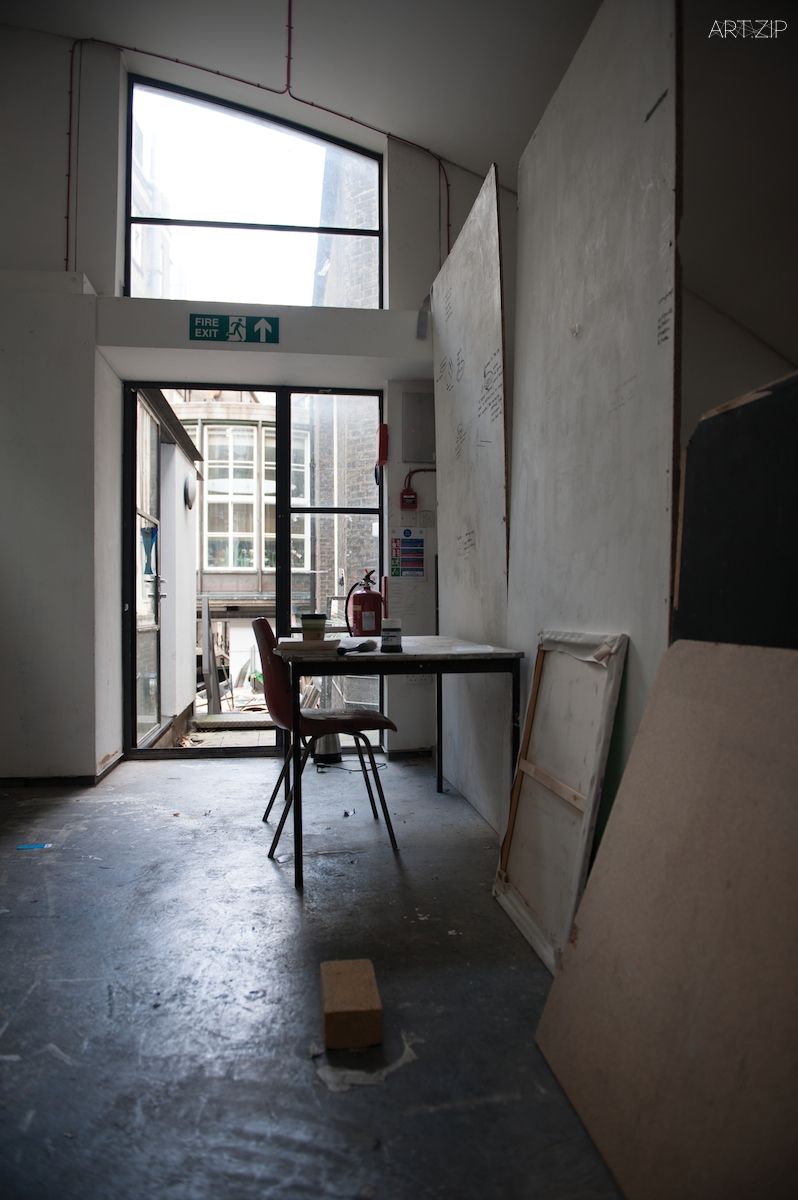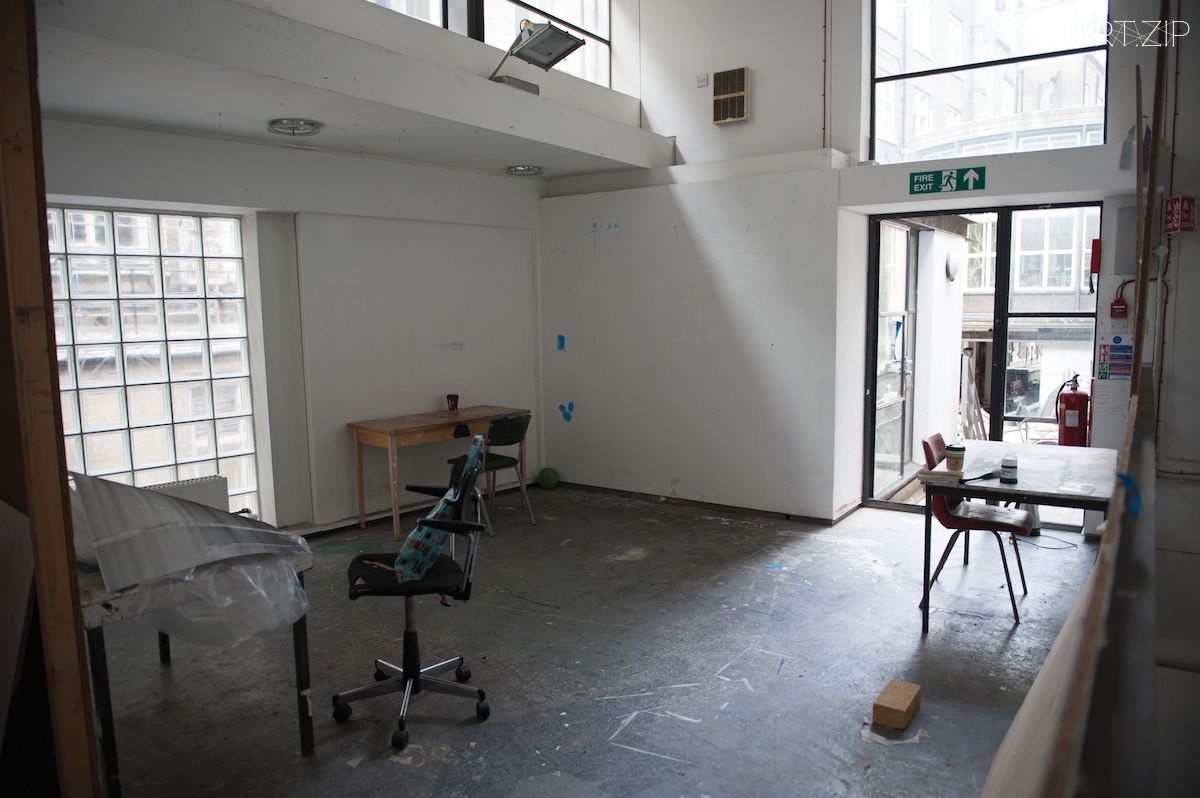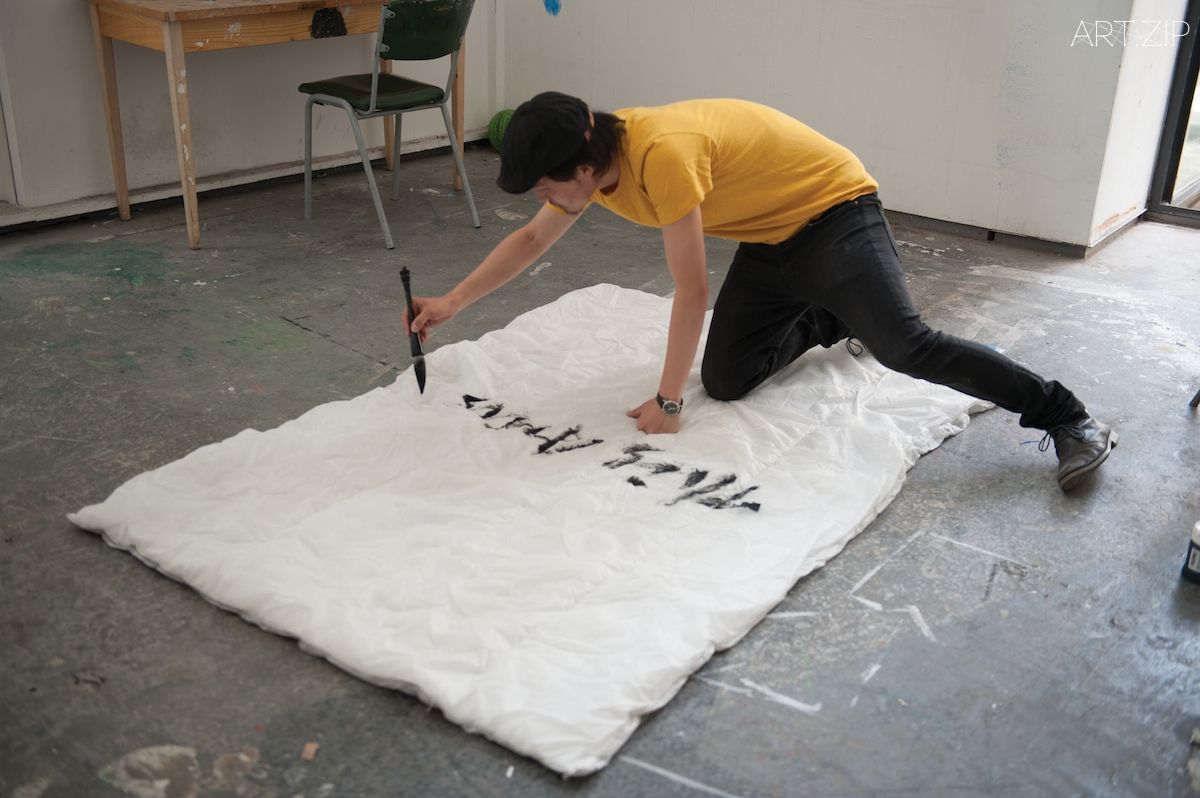
TRANSLATED BY 翻譯 x Syndi Huang 黃煥欣
Most British art colleges provide studio space for their fine arts students to cope with their creative learning and practice. Compared with other types of studios, what is the relationship between arts students’ studios and their creation, and what are those students’ opinions towards the relationship among studio space, studies and arts creativity? To find out an answer, we have an interviewed with Sun Yi, a MA Fine Art student from Slade School of Fine Art to talk about student studio space in UK arts colleges.
英國的藝術院校大多為純藝術專業的學生提供了供他們創作和學習的工作室空間,與其他類型的藝術工作室相比,藝術類學生的工作室和他們的創作之間有什麼樣的關係,他們又是怎樣來看待工作室和學習生活及藝術探索之間的關係的呢?為此,我們特地採訪了斯萊德藝術學校純藝術專業研究生孫毅,讓他來給我們講一講英國藝術院校學生工作室的情況。
ART.ZIP: Would you please tell us how arts colleges, such as Slade School of Fine Art, allocate studios for the students?
ART.ZIP: 可不可以給我們介紹一下,像斯萊德這樣的藝術院校是怎麼給學生分配工作室的呢?
SY: I am not sure about other art colleges, but for my college, students are requested to attend a welcome meeting at the beginning of the semester where teachers will hand out to each student a studio space plan from which students can pick an area that they like. While some students may choose the same area they want, they need to sort out the space by themselves and teachers would not interfere. The students’ choose for space is based on the forms and needs of their creativity, for instance, for those students who tend to create larger scales of artworks, they will choose relatively higher ceiling space, whilst some students prefer space with great natural light. For myself, I have chosen a relatively small space, as my works are in comparatively smaller sizes.
SY: 別的學校怎麼分配我不是很清楚,斯萊德的分配方式是這樣:在學期開始的時候,我們有一個歡迎會,會上老師會給每個同學發一個工作室空間的平面圖,由同學們自己來選擇喜歡的區域和位置,有些時候同一塊工作室空間可能會有幾個同學同時都看中的情況,這種情況下一般都是學生自己私下進行調劑,老師不太干涉。大家選擇工作室空間也都是根據自己的創作形式和工作需要來選擇空間,比如創作比較大尺幅繪畫的同學,會選擇挑高比較高的牆面空間,也有的喜歡光線好的地方,我的作品尺幅都不大,所以我選的工作室空間就比較小。
–
ART.ZIP: How do students make use of their allocated space? What do you think the difference between arts studios in the UK and those in the mainland China?
ART.ZIP: 那同學們都是怎麼使用他們的空間的呢?會在工作室裡做些什麼?你覺得這邊的學生工作室和國內的有什麼不同呢?
SY: The studios for majority of students in the UK are a state of living and working that are combined together, where they read, chat, paint, sleep, listen to music, and have coffee, etc., which is similar to that of China’s student art studios. With regard to the difference, there are not many students in the UK majoring in fine art paintings and many of them will go to try a variety of other art forms, such as printmaking, installation and sculpture, etc. And the students are from different countries, speaking different languages, which enrich the diversity of cultures and creativity. This learning and working environment in the UK arts colleges is very much different from that in the mainland China.
SY: 大部份同學在工作室里是一種生活狀態和工作狀態混雜的形式,看書、聽音樂、聊天、喝咖啡、畫畫、睡覺,幹什麼的都有,這點和國內的藝術院校工作室區別不是很大。說到區別的話,一方面英國院校里學生從事繪畫的人並不是很多,很多同學也會去各種工作坊車間嘗試版畫、裝置、雕塑等創作方式,而且同學們都來自不同國家,說不同的語言,在創作和文化的多樣性上非常豐富;這種學習和工作環境與中國院校的學生工作室有很大不同。
ART.ZIP: In terms of your personal learning and creativity, what is the relationship between you and the school studio space?
ART.ZIP: 那對你個人的學習和創作來說,學校的工作室和你之間的關係是怎麼樣的呢?
SY: Personally, the school studio space is not particularly significant to me, because on the one hand, I do relatively smaller artworks, and on the other hand, my creation is not necessarily in need of a particular studio space to engage in. The studios that the school provides for students are merely passive space allocated for students in a temporary period of time. And the school’s activity arrangement such as exhibitions and summer short courses often affects our use of the studio space. Therefore, I don’t really like the studio space that the school has offered. It is only in the case I have a clear work plan and objective that I will go there, otherwise I prefer to go to the library or café for reading, or do paintings at home. The studio for me is just a symbol of identity as an art student hence assigned with a specific space.
SY:對於我自己來說,學校的工作室空間並不是特別重要,我的作品都不大,而且我關注的方向也並不一定需要工作室才能進行創作。學校提供給學生的工作室在屬性上對學生來說是一個很被動的空間,是一個臨時性的,被分配的空間,而且學校的很多安排比如展覽和暑假短期課程都會影響到我們使用工作室空間,所以我並不是非常喜歡學校提供的工作室,我一般是有了明確的工作計劃和目標的前提下才會去工作室創作,除此之外,我更願意去圖書館或者咖啡廳看看書,或者在家裡畫畫。工作室對我來說,就是一個身份的符號──我是一個藝術類學生,所以被分配了一個工作室空間。
–
ART.ZIP: Do you have any ideal studio space in your mind?
ART.ZIP: 你心目中有沒有一個比較理想化的工作室空間的構想?
SY: It has to come with a large table where I can practice calligraphy and ink painting, since in the past I have been receiving training in these two areas, and they have become an indispensable part of my life. But this does not count into the space of art practice, but for leisure and fun only. Besides, there should be a place for drinking tea, preferably with a small bed where I can lie down whenever feeling tired. Ideally the studio is a factory-like open space with the possibilities of various creativity and experiment, which may be in a cluttered condition, nevertheless, I don’t mind it shows the sign of life in the studio, but the areas for work, relax and living should be accordingly divided.
SY:要有一個大的畫案,能畫畫水墨畫和練練書法,因為以前一直接受這方面的訓練,很難割捨,不過這個區域不算是藝術創作的空間,算是休閒空間,另外還有喝茶的地方,最好還有一張小床,累了可以躺一下。工作的空間希望是一個工廠似的開闊空間,可以進行各種創作和實驗,可能會比較雜亂,我並不介意在工作室裡流露出生活的痕跡,但會分割出來創作用的空間、休息空間和生活空間。

